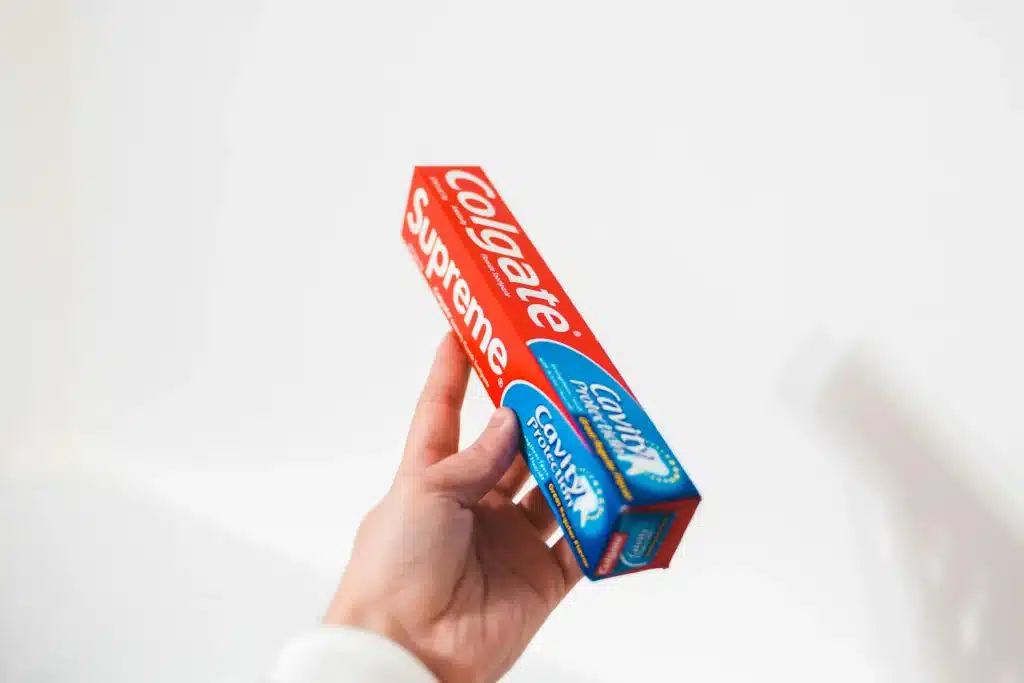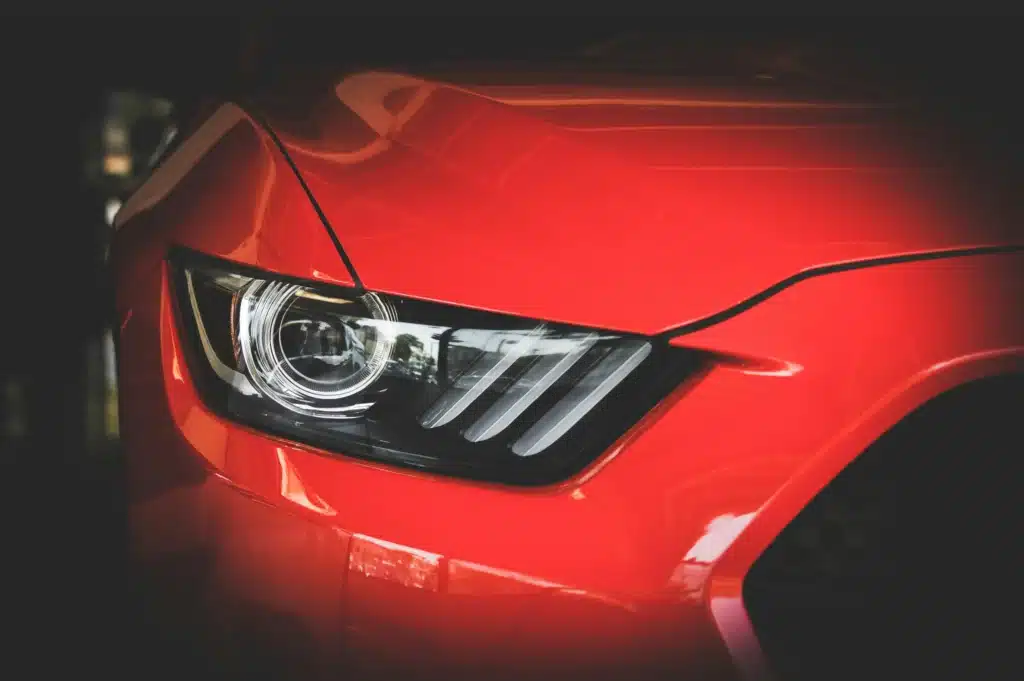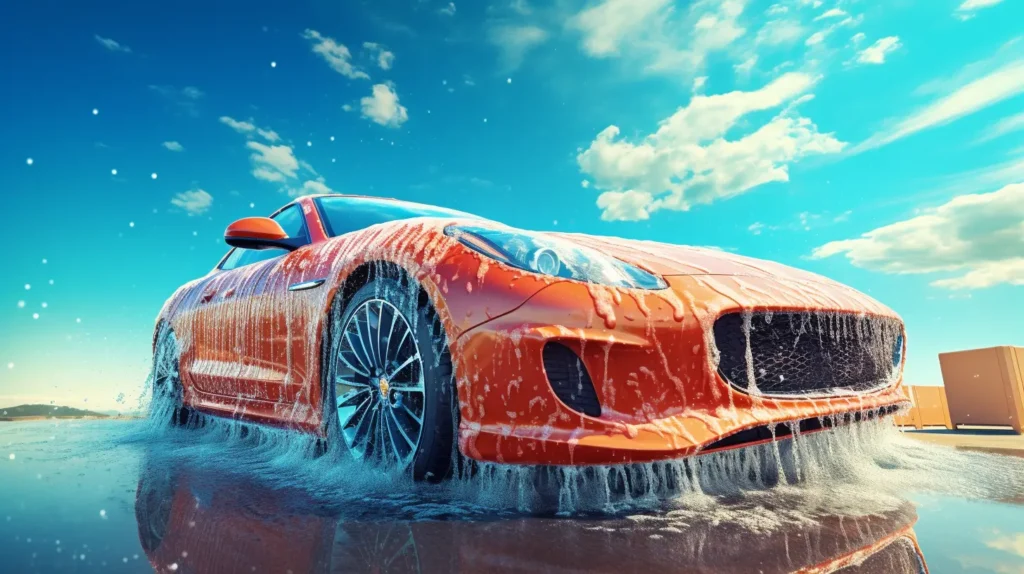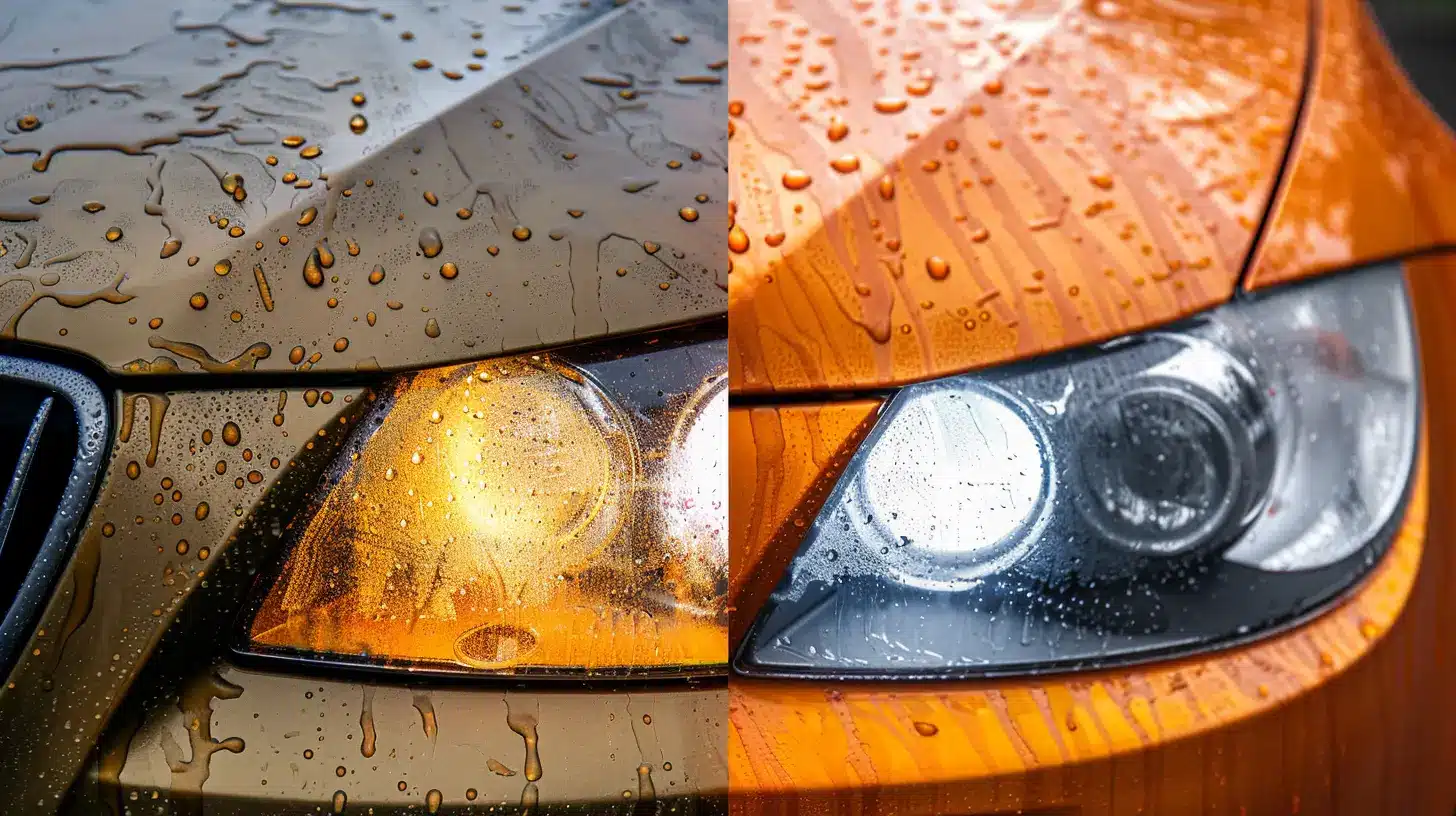Having headlights that are hazy due to oxidation can hinder visibility, especially during nighttime drives.
However, don’t worry, as I have found a simple and effective solution to tackle this issue.
By utilizing household items like baking soda and vinegar or toothpaste, you can restore your headlights’ clarity without breaking the bank.
But how exactly do these common ingredients work their magic on oxidized headlights?
Let’s explore the step-by-step process and discover the key to achieving clear and bright headlights effortlessly.
Key Takeaways
- To Clean Headlights The baking soda and vinegar method effectively remove oxidation for clearer headlights.
- Toothpaste restores clarity by eliminating oxidation and yellowing.
- Prevent oxidation with regular DIY maintenance using simple household items.
- Enhance visibility and safety by preventing foggy headlights through proactive care.
1. Baking Soda and Vinegar Method
To effectively remove oxidation from headlights, the baking soda and vinegar method provides a powerful and eco-friendly solution.
This DIY headlight restoration technique is one of the most effective headlight maintenance tips you can follow.
By combining baking soda and vinegar, you create a potent mixture that acts as a gentle abrasive to remove oxidation from headlight lenses.
These oxidation removal tricks are essential for maintaining clear and bright headlights.
The combination of baking soda and vinegar breaks down grime, dirt, and oxidation buildup, restoring clarity to your headlights.
The abrasive nature of baking soda aids in scrubbing away stubborn oxidation without causing damage to the plastic surfaces.
This method isn’t only effective but also eco-friendly, making it a safe choice for headlight care essentials.
Regular application of this easy headlight cleaning hack can prevent future oxidation, ensuring peak visibility while driving.
2. Toothpaste Method

Utilizing toothpaste as a mild abrasive can effectively eliminate oxidation from headlights, restoring their clarity and improving visibility. This DIY solution is a cost-effective method for headlight maintenance and oxidation prevention.
To begin, gather the necessary materials: car wash soap, masking tape, disposable gloves, car washing cloths, toothpaste, and car wax. Start by cleaning the headlights with car wash soap and water to remove any surface dirt.
Next, apply a small amount of toothpaste to a damp cloth and rub it onto the headlight in circular motions. The toothpaste acts as a gentle abrasive, removing oxidation and grime from the surface. Rinse the headlight thoroughly and repeat the process if needed.
Finish by applying a coat of car wax to provide headlight protection and further enhance clarity. This method not only improves visibility but also guarantees the longevity of your headlights with minimal effort.
3. DIY Solution Kits

In addition to these DIY solutions, headlight restoration kits are also available for effectively removing oxidation from headlights. When selecting a kit, consider one that includes all necessary tools and instructions for easy use. Look for kits with UV protectant coatings for long-term results.
Following the selection of an appropriate restoration kit, it’s essential to follow the step-by-step instructions provided with the kit for the best results.
Before applying any products from the kit, thoroughly clean the headlights using soap or a specialized cleaner specifically designed for automotive surfaces.
Utilizing SP Cleaning Chemicals
if you are a business owner who cleans vehicles and needs chemicals in bulk, as a chemical manufacturer in Canada we produce a wide variety of chemicals for car wash chemicals, pressure washing chemicals, and detailing chemicals.
Our chemicals are specifically designed to tackle dirt and grim, effective on all types of surfaces. Plus when you buy from us you will more than 30% off the market price of other car cleaning chemicals
4. Window Cleaner and Car Polish

I find that applying a suitable window cleaner is important for effectively removing dirt and grime from the headlight surface.
Using an ammonia-free window cleaner is vital to prevent damage to plastic surfaces while prepping the headlights.
After cleaning with the window cleaner, car polish can be applied to restore clarity and shine to the headlights.
To protect trim, paint, and plastic parts during this process, it’s advisable to use masking tape.
Finally, using a car buffer with the automotive polish can enhance the overall finish of the headlights, providing shine enhancement and a professional touch to the restoration process.
- Glass cleaner technique
- Paint protection
- Plastic restoration
- Buffing method
- Shine enhancement
5. Preventing Headlight Oxidation
To prevent oxidation on headlights, regular maintenance practices such as parking in shaded areas and washing the car frequently are important. Preventive techniques play a critical role in maintaining clear headlights over the long term.
By minimizing UV exposure through shaded parking, you can reduce the oxidation process that dulls headlight surfaces. Regular washing is equally essential to prevent the accumulation of dirt and grime, which can expedite oxidation.
Implementing proactive measures, such as periodic sanding and applying protective coatings, can greatly aid in oxidation prevention. Consistent headlight maintenance is key to preserving their clarity and appearance.
6. Headlight Restoration Tools
Utilizing a range of specialized tools is important for effectively restoring headlights. This includes sandpaper for oxidation removal and masking tape for protecting surrounding vehicle surfaces during the restoration process. When working on headlight restoration, it’s essential to pay attention to the following:
- Sanding Techniques: Use sandpaper of varying grits starting from a lower grit for heavy oxidation and progressing to a higher grit for a smoother finish.
- Masking Tips: Apply masking tape around the headlights to shield the paint and other parts of the vehicle from accidental scratches or damage during the restoration.
- Buffing Methods: Employ a car buffer with the appropriate pads to efficiently apply polishing compounds for a glossy finish.
- Sealing Process: After restoration, seal the headlights with a UV sealant to prevent future oxidation and maintain clarity.
- Cloth Selection: Opt for microfiber cloths as they’re gentle on the headlights and ideal for wiping off cleaning solutions and polishing compounds.
7. Cleaning Foggy Headlights
When restoring foggy headlights, the yellowish appearance caused by UV degradation of polycarbonate lenses can be effectively eliminated using household items like toothpaste or vinegar.
Foggy headlights not only look unattractive but also compromise clear visibility while driving. This issue arises due to the absorption of blue light by polycarbonate lenses, resulting in a dim and yellowish light emission.
To address this problem, DIY solutions like toothpaste or vinegar can be used to remove oxidation from the headlight’s surface. By gently buffing the lenses in circular motions with these household items, the oxidation is lifted, restoring clarity and brightness to the headlights.
Regular headlight care through simple maintenance practices like this can prevent fogging in the future, ensuring ideal headlight performance and safety on the road.
Removing oxidation from foggy headlights is an easy maintenance task that greatly enhances visibility and driving experience.
8. Headlight Restorer Application
Headlight restorer application involves a meticulous process of cleaning the surface, applying the product, and buffing for best results. When working with plastic headlight covers, it’s important to use products specifically designed for this material to avoid damage.
Here are some key points to take into account:
- DIY sanding technique: Some restoration kits may include sanding pads for more severe oxidation, but it’s important to follow instructions carefully to prevent over-sanding.
- Plastic headlight covers: Make sure the restorer is compatible with plastic covers to achieve the best results without causing harm.
- Lens restoration kits: These kits often contain everything needed for the restoration process, including cleaners, protectants, and polishing compounds.
- Clear coat protection: Applying a clear coat after restoration can prolong the clarity and protect against future oxidation.
- Headlight lens replacement: In extreme cases of damage or oxidation, replacing the headlight lens may be necessary for safety and aesthetic reasons.
Ensuring proper application and following manufacturer guidelines can lead to greatly improved visibility and a refreshed look for your vehicle.
9. UV Sealant Application
To maintain the clarity and protect against future oxidation of headlights, the application of UV sealant serves as an important step in the headlight restoration process. UV sealant benefits headlights by acting as a clear coating that provides headlight protection against harmful UV rays and environmental factors.
By applying at least three coats of UV sealant, guaranteeing long-lasting clarity is ensured, extending the lifespan of the restoration. This sealant acts as an environmental barrier, preventing deterioration and maintaining the shine achieved through sanding and polishing.
The advantages of UV sealant include enhancing the overall appearance of headlights and preserving their quality over time. Consistent application of UV sealant is key to maintaining the protection and clarity of headlights, making it an essential final step in the headlight restoration process.
10. Quick Fixes for Headlight Restoration
For a quick solution to headlight restoration, consider employing household items like baking soda and vinegar or utilizing Coca Cola to temporarily improve headlight clarity. DIY solutions can provide immediate relief for foggy or oxidized headlights without the need for specialized products.
Here are some quick fixes for headlight restoration:
- Headlight wipes: Convenient options for on-the-go headlight maintenance.
- DIY solutions: Using common household items like baking soda and vinegar for a cost-effective fix.
- Headlight maintenance: Regular cleaning and care can prevent severe oxidation buildup.
- Clear coat protection: Applying a clear coat can help shield headlights from future damage.
- Headlight buffing: Buffing out minor scratches and oxidation can enhance headlight clarity in minutes.
These methods offer temporary solutions for headlight issues, but for a more lasting effect, consider professional restoration or sealing techniques.
11. Expert Hacks for Headlight Cleaning
To effectively enhance the clarity and brightness of headlights, implementing expert hacks in the cleaning process can greatly improve visibility and safety on the road. Headlight maintenance is important for best performance.
DIY solutions like using toothpaste as a mildly abrasive cleaner can effectively remove oxidation and restore clarity to cloudy headlights. For more heavily oxidized or very cloudy headlights, a mixture of vinegar and baking soda can be environmentally friendly and highly effective.
Cleaning techniques involving window cleaner and car polish help prepare the headlight surface for restoration, while masking tape protects surrounding car parts. Regular washing and drying of headlights can prevent clouding caused by UV exposure, extending their lifespan.
These restoration tips not only save time and money compared to professional services but also guarantee that your headlights provide top visibility for safe driving conditions.
12. Professional Headlight Cleaning Services
Specialized tools and advanced techniques are employed by professional headlight cleaning services to effectively eliminate oxidation and restore headlights to their peak clarity and brightness levels. These services offer a range of benefits, including expert clarity, safety improvements, and long-lasting results.
Here are some key aspects of professional headlight cleaning:
- Headlight restoration benefits: Professional cleaners can fully restore headlights to like-new condition, improving visibility and safety on the road.
- Professional techniques: Services often involve sanding, polishing, and sealing the headlights to guarantee peak clarity and durability.
- Long-lasting results: Professional cleaning provides lasting clarity and brightness, outperforming many DIY methods.
- Expert clarity: Trained professionals have the expertise to achieve superior results, enhancing the overall appearance of the vehicle.
- Safety improvements: Clear headlights contribute to better visibility, reducing the risk of accidents during nighttime driving.
13. Conclusion
To sum up, utilizing household items like baking soda and vinegar or toothpaste is the best way to clean oxidation off headlights effectively and affordably.
By following the step-by-step process of buffing the headlights in circular motions, you can restore clarity and enhance visibility while driving.
Regular maintenance and care will help extend the lifespan of your headlights, ensuring a safer driving experience on the road.
Say goodbye to cloudy headlights and hello to clear visibility!



